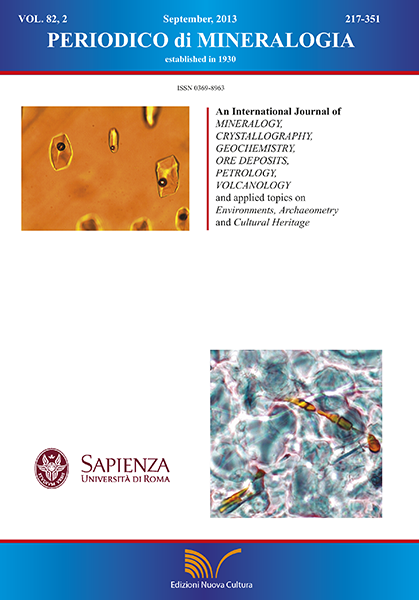Archaeometric investigation of Late Roman marble statue from Kaucana (RG) with considerations on the diffusion of Thasos marble in Sicily
DOI:
https://doi.org/10.2451/2013PM0019Keywords:
white marble|Thassos|archaeometry|underwater archeological explorations|Kaucana Late-Roman HarborAbstract
In this work, a Roman white marble fragment of a headless body and a limestone ballast have been studied. The artifacts were discovered during the underwater archaeological explorations carried out in the Late Roman Harbor of Kaucana in Palmento of Punta Secca (RG; Sicily). Petro-archeometrics analysis to identify their provenience were performed with the aim to constraint archaeological hypothesis. In particular, to characterize the white marble we used a multi-technique approach to the petrographic description including the distinctive parameters AGS, MGS and GBS carried out by optical microscopy (MO), whereas mineralogical and chemical analysis were obtained respectively by means of X-Ray Diffraction and X-Ray Fluorescence with a portable instrument. Furthermore, the determination of the ∂18 O and ∂13 C isotopic ratios gave important information for the identification of the provenience of marble by comparison with literature data. Regarding the ballast, the characterization of the limestone was carried out by traditional petrographic, mineralogical and chemical methods. Finally, information about morphology and causes of underwater deterioration suffered by the materials was obtained by SEM-EDS analysis. All the data strongly suggest the provenance from Capo Vathy quarry in Thasos island (Greece) for the marble. Whereas for the ballast, both a Thasian and south Sicilian origin is excluded. This paper contributes to reconstructing the marble routes from Greece to the western parts of the Roman Empire.


